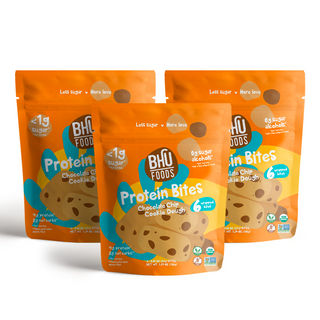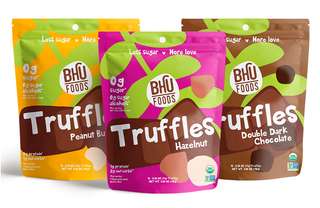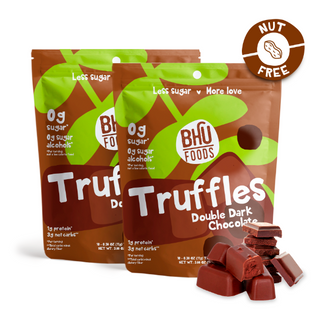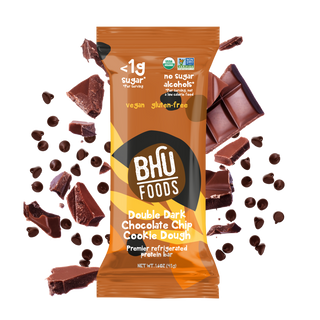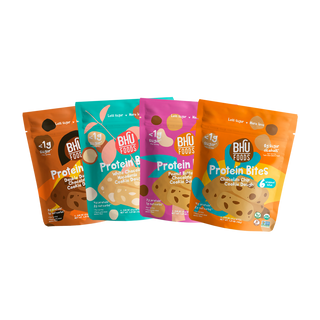
The Best And Worst Starchy Veggies To Eat
Vegetables come in two forms: non-starchy and starchy, and while you want to make the bulk of your vegetable intake consist of non-starchy foods, starchy vegetables still offer great health benefits, like antioxidants, as well as other vitamins and minerals, which are good for your health, heart, brain, mood and longevity. Antioxidants found in colorful, starchy veggies also speed muscle recovery post-workout, since they fight free radical damage that’s done to muscles as a result of exercising and its fatiguing effects.
Of course, you want to make sure they’re still consumed in moderate doses, as a form of energizing, healthy carbohydrates and opting for those with fiber to make them “complex” instead of just simple, fast-acting carbs with more sugar and empty carbohydrates and calories.
“Complex” means they consist of fiber, which reduces total carbohydrates and provides a net gram amount that’s lower and representative of the number of grams your body absorbs and stores. And this is what separates starchy vegetables from one another as being either better or worse for health and weight management, so think to include the most beneficial starchy options when preparing your grocery store list for the week.
This will help you avoid going overboard on carbohydrates and sugars, both of which can lead to blood sugar elevation (not good for diabetics, in particular), decrease in appetite suppression where you’ll be hungry again shortly after and potential weight gain in certain individuals over time, depending on a few factors, (i.e. how regular and large in quantity starchy veggie intake is, individual body composition, activity level and more).
And of course, make room for lots of non-starchy vegetables, such as those consisting of high water content or that are green in color. Examples include uber-hydrating options like cucumbers, tomatoes and bell peppers, as well as leafy greens, broccoli, cauliflower, brussels sprouts and more. As for your best starchy sources, these are a couple to add to your shopping list, all of which are delicious and versatile too.
The Best Starchy Vegetables to Eat
Sweet Potato
Sweet potato is a better alternative to basic, white potato because although it still contains carbohydrates and sugar, and in higher doses when compared to non-starchy greens and other counterparts, it offers antioxidants to protect your heart, brain, gut, skin and muscles. It still has fiber (much like its relative, the white potato, does), but a boost of nutritional value that white potato lacks, which is its rich supply of antioxidants, as represented by sweet potato’s orange hue (a color known to signify the presence of high antioxidant content).
Sweet potatoes offer both anti-aging and workout recovery benefits by fighting free radical damage, which is noticeable appearance-wise on the skin in the form of wrinkles, fine lines or dark circles, or in how your muscles feel and how well they recover after exercise. Antioxidants also increase the absorption of nutrients so they’re absorbed more efficiently, allowing depleted muscles to regain energy and increase in size and strength faster.
Carrots
Similarly to sweet potato, carrots are also starchy and orange, meaning they contain the same properties and are very versatile, where you can sneak them into dessert, like pound cake, or into breakfast muffins or pancakes.
These antioxidants, like beta-carotene, along with other essential vitamins and minerals, like vitamin A and C, are important for keeping immunity high and strong and in providing protection against disease for various areas of the body, including the brain, heart, eyes, skin and gut.
Beets
Although technically a starchy vegetable, beets are great for workout recovery and for improving heart health, circulation and blood flow, as well as bone health, among other benefits. Eating them with crumbled dairy-free cheese or a dollop of cool dairy-free yogurt and herbs would be a great post-workout snack, when you add a rich source of protein to complement it. Don’t forget!
Marinate them and use as a topping for leafy greens when preparing a salad for lunch or use in a cauliflower protein bowl that’s filled with tofu chunks, cruciferous vegetables, non-starchy veggies and a dressing with some healthy fat content to tie it all together and fill you up for longer.
The Worst Starchy Vegetables to Eat
Green Peas
While green peas are green in color, which makes them seem comparable to some of the best vegetables you can eat, such as broccoli, brussels sprouts and asparagus, they aren’t as nutritious and are way higher in carbohydrates without much fiber.
And don’t confuse them with edamame, which also are green and pea-like but are soy-based, protein-packed edamame and infinitely more nutrient dense, with its recognition for being a top plant protein, in particular. Instead of green peas, eat other green vegetables that are non-starchy, like the ones mentioned above and look to beans and legumes as carbohydrate sources, since they have more protein, fiber, iron and other important nutrients.
White Potato
While white potato is high in potassium and fiber, meaning it’s best if eaten after a workout where your body most needs carbohydrate sources, electrolytes like potassium and the fiber to stay fuller longer and to promote gut health and the immune system so you’ll fight off sickness and stay on track with your workouts, overall health and daily routine. If it’s between white potato and sweet potato though, white potato is going to lose though.
Corn
While corn on the cob tastes great in the summer when it’s grilled and loaded with seasonings and other toppings, it’s also often lathered in butter and oil plus unhealthy toppings like crumbled bacon bits, cheese and more. So, you might want to think of corn on the cob as an indulgence, and regular corn year round as being one of the less beneficial starchy vegetables to choose from, too.
And even if you are eating corn kernels off the cob as part of a vegetarian or vegan taco recipe or as a topping for a vegan salad with tempeh or tofu, citrus, avocado and corn, you’re not getting much nutritional value but a lot of carbohydrates and sugar—and you’re missing out on the opportunity for a greater nutritional bang for your buck with a different kind of vegetable or starch source instead.













